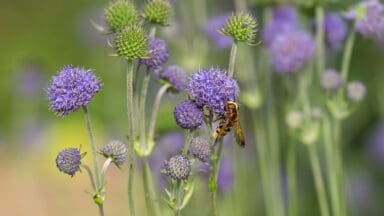
According to a new study recently published in the journal Nature Communications, researchers have found that whilst some species are holding steady or even expanding, many communities are being reshaped at a local level by climate change and urban development.
Led by Dr Yoann Bourhis of Rothamsted Research, the study analysed more than three decades of records covering 1,252 species of butterflies, moths, dragonflies, grasshoppers, beetles, bees, wasps and hoverflies. Using advanced machine-learning models, they tracked changes in where insects live across Great Britain and pinpointed the main environmental forces driving those shifts.
Contrary to widespread fears of an overall collapse, the researchers detected no nationwide decline in insect occupancy since 1990 but the data revealed profound local changes in the make-up of insect communities.
“The findings suggest that while Britain may not be witnessing an outright crash in insect numbers, it is undergoing a subtler but no less significant ecological reshuffling. This could have knock-on effects for pollination, pest control and wider biodiversity,” said Dr Bourhis.
Urban sprawl and the simplification of farmland emerged as key drivers of decline in certain species, while rising temperatures are altering life cycles. Insects with narrow habitat requirements are particularly vulnerable to the loss of diverse landscapes, while species capable of breeding multiple times a year are better able to adapt to a warming climate.
Rothamsted Research is a non-profit research centre that focuses on strategic agricultural science for farmers and society worldwide.
Research reference: Bourhis, Y., Milne, A.E., Shortall, C.R. et al. Trait mediation explains decadal distributional shifts for a wide range of insect taxa. Nat Commun 16, 8131 (2025).

